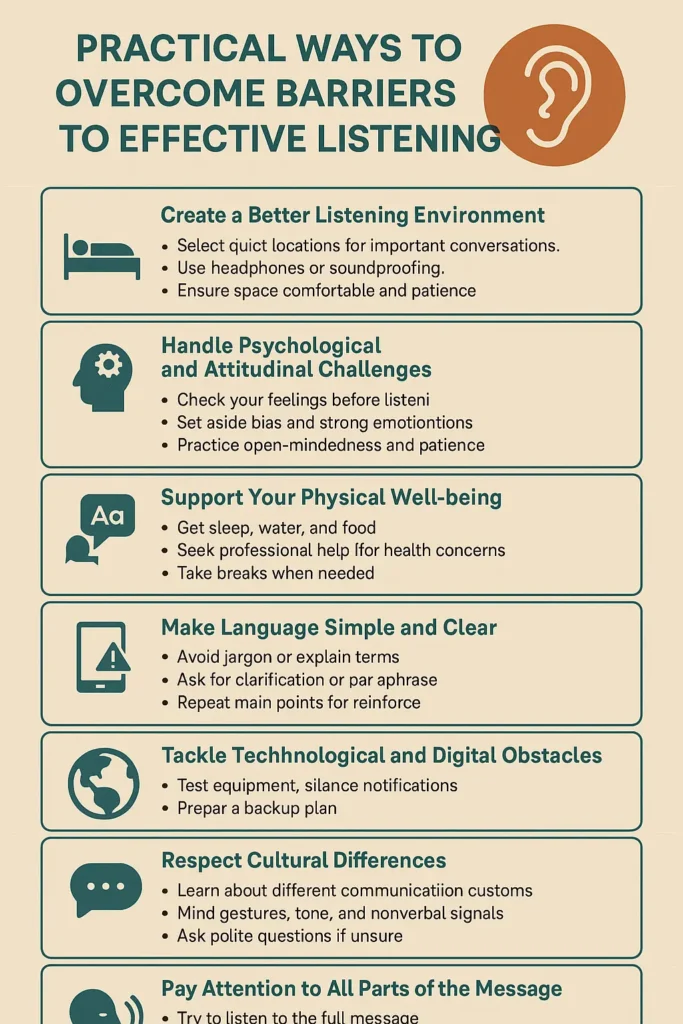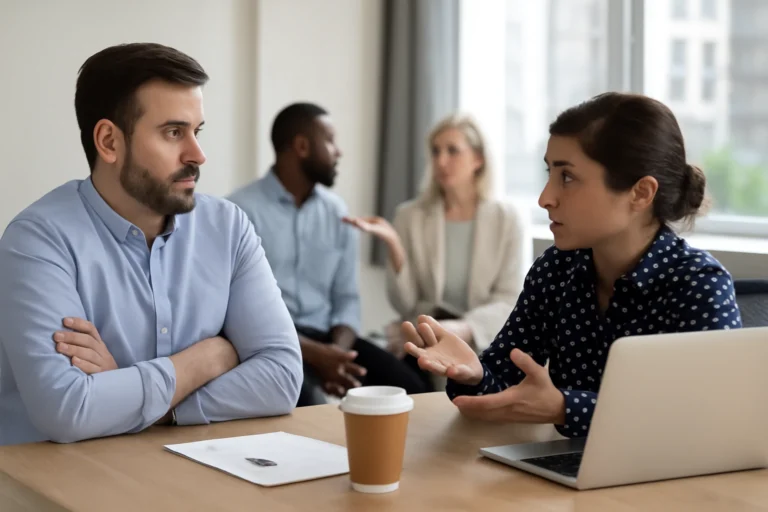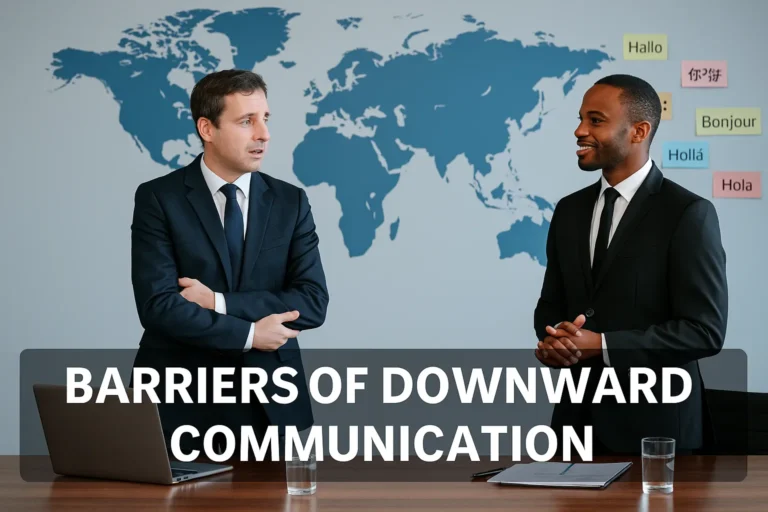Barriers to Effective Listening
Have you ever sat in a meeting or conversation, only to realize you missed an important point? This happens to almost everyone and often because of barriers to effective listening. These obstacles make it difficult to pay attention, understand, or remember what others are saying. Sometimes the problem is noise, sometimes it’s our own thoughts, and sometimes it’s technology or cultural differences. The good news is, you can spot and overcome these barriers with some simple habits and a little awareness.
What Are Barriers to Effective Listening?
Barriers to listening are anything that gets in the way of hearing, understanding, or remembering what someone else says. While many people think listening is the same as hearing, they’re actually different. Hearing is the physical act of detecting sound. Listening, on the other hand, is a skill. It involves paying attention, interpreting messages, and responding thoughtfully.
Many factors can block or disrupt listening. Some are external, like noise or poor environments, while others are internal, like our thoughts, feelings, or attitudes. Technology has even introduced new challenges with constant notifications and digital distractions. These obstacles are more common than ever, making it important to know how to spot and overcome them.
Common Types of Barriers to Effective Listening
Everyone faces different barriers to listening at some point. Let’s look at the most common types and how they affect conversations in everyday life.
Physical Barriers
Physical barriers are external obstacles that make it difficult to focus on what’s being said. This might include loud background sounds, construction noise, poor equipment in a virtual meeting, or even a crowded room with many voices at once. If a speaker’s voice is too soft, or if you’re seated far away, it’s even harder to listen. People with hearing impairments face unique physical challenges that can block messages before they even reach the mind.
Psychological Barriers
Our minds are powerful, and sometimes our own thoughts or emotions can get in the way of listening. Psychological barriers include personal biases, stereotypes, stress, anxiety, or strong emotions like anger and excitement. If you’re worried about something or already have an opinion about the speaker, your mind may filter or distort the message. This leads to misunderstandings and missed details.
Environmental Barriers
The setting can shape how well we listen. Environmental barriers include uncomfortable chairs, poor lighting, stuffy air, or open-plan offices where distractions are everywhere. A noisy café or a cluttered workspace makes it almost impossible to concentrate. Even temperature can affect focus—too hot or too cold, and attention starts to wander.
Physiological Barriers
Sometimes the body is the obstacle. Hearing loss, illness, pain, fatigue, or hunger can all reduce the ability to listen. For example, a person who is tired after a long day will struggle to focus, even in a quiet room. Temporary conditions like a headache or stuffy nose also affect listening. These issues remind us that listening is both a physical and mental skill.
Semantic Barriers
Words don’t always mean the same thing to everyone. Semantic barriers occur when there’s confusion about language, jargon, or slang. A doctor using medical terms, a lawyer quoting legal language, or a tech worker using acronyms can quickly lose anyone not familiar with the vocabulary. Even common words might have different meanings in different regions or cultures.
Attitudinal Barriers
Attitude shapes how people listen. If you think a speaker isn’t credible, or if you’re just not interested, it’s hard to pay attention. Prejudice, boredom, and impatience can all close the mind to new ideas. A closed attitude can lead to dismissing important information, even if the message is clear.
Cultural Barriers
Culture plays a huge role in how people communicate. Gestures, tone, eye contact, and even silence mean different things in different cultures. Cultural barriers happen when listeners are unfamiliar with another person’s norms, customs, or ways of speaking. In a multicultural world, this is a common reason for miscommunication.
Technological Barriers and Digital Distractions
Phones, laptops, constant notifications, and poor internet connections can all block messages. In online meetings, lag, dropped audio, or software glitches become real barriers to effective listening. Multitasking with digital devices often prevents people from focusing fully on the speaker.
Selective Listening
Selective listening happens when we only pay attention to what matches our beliefs or interests. Tuning out anything else is one of the subtler barriers to effective listening. This habit can hurt relationships and cause us to miss important warnings or feedback.
Nonverbal Communication Barriers
Listening isn’t just about words. Nonverbal cues—like body language, facial expressions, or tone—carry important meaning. Misreading or missing these signals creates barriers. A lack of eye contact, distracting gestures, or confusing facial expressions can block understanding, even when the words are clear.
Active Listening and Feedback
Active listening is more than just sitting quietly. It’s a process of fully focusing, showing genuine interest, and providing feedback. Good listeners nod, ask questions, repeat important points, and offer comments to show they understand. Feedback is vital because it lets speakers know their message was received. Without it, conversations become one-sided, and barriers go unnoticed.
Empathy is another key part of listening. When you put yourself in someone else’s shoes, you’re better able to understand their feelings, meaning, and intentions. Empathy bridges gaps caused by attitudes, culture, and emotion. It helps build trust and break down barriers faster than any technique.
Listening Styles
People listen in different ways. Some prefer facts and details, while others focus on feelings or the bigger picture. Common listening styles include:
- Appreciative Listening: For enjoyment, like music or stories
- Empathetic Listening: To understand emotions
- Comprehensive Listening: To learn and remember facts
- Critical Listening: To evaluate or make decisions
Mismatches in listening styles can lead to confusion. If one person wants emotional support and the other just gives advice, both may leave the conversation unsatisfied. Recognizing your own style—and adjusting to others—can prevent misunderstandings.
Ways to Overcome Barriers to Effective Listening

Even though you can’t eliminate every obstacle, making small, consistent changes can help you break through many barriers to effective listening. Here are some practical habits that really work:
Create a Better Listening Environment
Choose quiet locations for important conversations whenever possible. Use headphones or simple soundproofing tricks to block out unwanted background noise. Make sure your space feels comfortable and bright—this helps everyone stay focused.
Handle Psychological and Attitudinal Challenges
Take a moment to check your feelings and mindset before you listen. If you notice personal biases or strong emotions, try to set them aside so you can focus on the message. Keeping an open mind and being patient with others is key to overcoming barriers to effective listening.
Support Your Physical Well-being
Your body affects your ability to listen. Get enough sleep, stay hydrated, and eat before important discussions so you’re alert. If you have hearing issues or other health concerns, consider seeking advice from a professional. Short breaks during long meetings also help you stay attentive.
Make Language Simple and Clear
Clear communication is essential for effective listening. Avoid jargon and explain any technical terms that could confuse others. If something doesn’t make sense, don’t hesitate to ask for clarification or to paraphrase what you’ve heard. Repeating main ideas is a great way to make sure everyone is on the same page.
Tackle Technological and Digital Obstacles
Before joining calls or presentations, test your equipment to avoid surprises. Silence unnecessary notifications and put aside devices that aren’t needed. If your connection fails, be ready with a backup plan, such as switching to a phone call.
Respect Cultural Differences
Barriers to effective listening often arise from cultural misunderstandings. Learn about different communication customs, and be mindful of gestures, tone, and nonverbal signals. If you’re unsure what something means, ask a polite question to gain clarity and avoid misinterpretation.
Pay Attention to All Parts of the Message
Selective listening can block important information. Try to listen to the full message, even if it doesn’t match your own beliefs or interests. Reflect on whether you’re ignoring feedback, and ask trusted friends or coworkers for honest input on your listening habits.
Focus on Nonverbal Cues
Effective listening involves more than words. Notice facial expressions, gestures, and changes in tone to fully understand what’s being communicated. Use your own body language—such as nodding or maintaining eye contact—to show that you’re present and engaged. Avoid doing other tasks so you don’t miss these subtle signals.
Are Barriers to Listening Holding You Back?
Ask yourself these questions:
- Do you often miss details in meetings or conversations?
- Are you easily distracted by noise or digital devices?
- Do you find it hard to listen to people you disagree with?
- Have you ever misunderstood a message because of language or jargon?
- Do cultural differences make you uncomfortable in some conversations?
- Are you aware of your own emotions or attitudes while listening?
- Do you give and receive feedback in conversations?
If you answer “yes” to several, you’re not alone. Most people face multiple barriers to listening, but you can improve with practice.
Conclusion
Barriers to effective listening are part of modern life, but they don’t have to control your conversations. Whether you’re dealing with noise, emotions, technology, or language, there are simple ways to get better. When you practice active listening, notice your attitudes, and respect cultural differences, you’ll build stronger relationships and avoid misunderstandings.
The more you work to break barriers to effective listening, the more successful your communication will be—at work, school, and home. Start making small changes today, and see how quickly your listening skills improve.
To discover more on building stronger communication, visit our full guide on Noise Barriers to Communication and other related topics.





